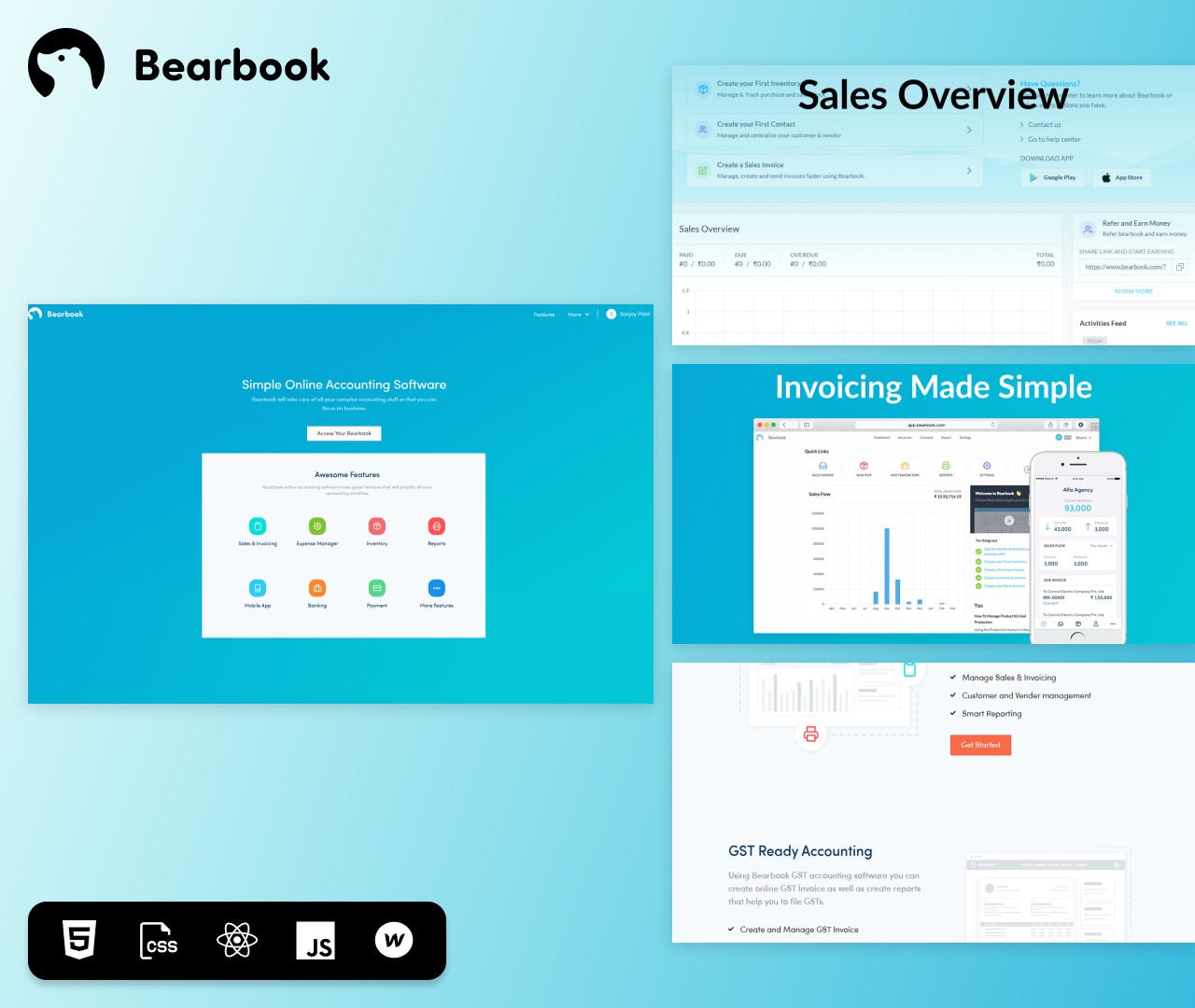Programming Platform
Android
Revolutionizing Building Management with UAC
Revolutionizing Building Management with UAC: IoT-Powered Fire Safety, Door Access, and Key Cabinet Solutions




Project Intro
The Unified Automation Controller (UAC) is a cutting-edge IoT-based solution designed to transform building management systems. By integrating advanced IoT technology, UAC offers a suite of essential services, including fire safety functionality, door access control, and key cabinet management. This innovative system is tailored to enhance operational efficiency, improve safety, and streamline access control in modern buildings. Whether for commercial, residential, or industrial spaces, UAC represents the future of smart building management, combining reliability, scalability, and user-friendly features.

The Challenge
Modern buildings face numerous challenges in managing safety and access control systems:
Fragmented Systems: Traditional building management systems often operate in silos, leading to inefficiencies and increased operational costs.
Safety Concerns: Fire safety systems may lack real-time monitoring and fail to integrate seamlessly with other building functions.
Access Control Issues: Managing door access and key cabinets manually is time-consuming and prone to human error.
Scalability Limitations: As buildings grow or requirements change, outdated systems struggle to adapt, leading to costly upgrades or replacements.
These challenges highlight the need for a unified, IoT-driven solution that can address multiple building management needs simultaneously.
The Solution
UAC leverages the power of IoT to provide a comprehensive, integrated building management system. Here’s how it solves the challenges:
Fire Safety Functionality: UAC incorporates real-time fire detection and alert systems, ensuring immediate response to emergencies. It integrates with existing fire safety infrastructure to provide a seamless, automated safety net.
Door Access Control: The system offers advanced door access management, allowing administrators to monitor and control entry points remotely. Features include biometric authentication, mobile access, and time-based permissions.
Key Cabinet Management: UAC digitizes key cabinet operations, enabling secure, trackable, and efficient key management. Authorized personnel can access keys with audit trails, reducing the risk of loss or misuse.
Scalability and Integration: Designed with scalability in mind, UAC can easily adapt to the evolving needs of any building. Its modular architecture allows for integration with other IoT devices and systems.
By unifying these critical functions, UAC simplifies building management, enhances safety, and reduces operational overhead.
Implementation
The implementation of UAC involves a structured, phased approach to ensure seamless integration and minimal disruption:
Needs Assessment: A thorough analysis of the building’s existing systems and requirements is conducted to tailor UAC’s features.
System Design: Customized solutions are designed to integrate UAC with current infrastructure, ensuring compatibility and optimal performance.
Installation and Integration: UAC’s hardware and software components are installed and integrated with fire safety systems, door access points, and key cabinets.
Testing and Calibration: The system undergoes rigorous testing to ensure all functionalities operate as intended.
Training and Handover: Building staff are trained on using UAC, and comprehensive documentation is provided for ongoing management.
This streamlined implementation process ensures a smooth transition to a smarter, more efficient building management system.

The Results
The deployment of UAC delivers transformative results for building management:
Enhanced Safety: Real-time fire safety monitoring and automated alerts significantly reduce response times during emergencies, potentially saving lives and property.
Improved Efficiency: Centralized control of door access and key cabinets eliminates manual processes, saving time and reducing errors.
Cost Savings: By integrating multiple systems into one platform, UAC reduces maintenance costs and operational overhead.
Scalability and Future-Proofing: UAC’s modular design ensures it can grow with the building, adapting to new technologies and requirements without costly overhauls.
User Satisfaction: Building occupants and administrators benefit from a safer, more convenient, and technologically advanced environment.
Conclusion
UAC is more than just an IoT solution—it’s a game-changer for building management. By addressing critical challenges in fire safety, door access, and key cabinet management, UAC sets a new standard for smart buildings. Its seamless integration, scalability, and user-centric design make it the ideal choice for modern facilities looking to enhance safety, efficiency, and operational excellence.
With UAC, the future of building management is here, and it’s smarter, safer, and more connected than ever before.
Project Intro
The Unified Automation Controller (UAC) is a cutting-edge IoT-based solution designed to transform building management systems. By integrating advanced IoT technology, UAC offers a suite of essential services, including fire safety functionality, door access control, and key cabinet management. This innovative system is tailored to enhance operational efficiency, improve safety, and streamline access control in modern buildings. Whether for commercial, residential, or industrial spaces, UAC represents the future of smart building management, combining reliability, scalability, and user-friendly features.

The Challenge
Modern buildings face numerous challenges in managing safety and access control systems:
Fragmented Systems: Traditional building management systems often operate in silos, leading to inefficiencies and increased operational costs.
Safety Concerns: Fire safety systems may lack real-time monitoring and fail to integrate seamlessly with other building functions.
Access Control Issues: Managing door access and key cabinets manually is time-consuming and prone to human error.
Scalability Limitations: As buildings grow or requirements change, outdated systems struggle to adapt, leading to costly upgrades or replacements.
These challenges highlight the need for a unified, IoT-driven solution that can address multiple building management needs simultaneously.
The Solution
UAC leverages the power of IoT to provide a comprehensive, integrated building management system. Here’s how it solves the challenges:
Fire Safety Functionality: UAC incorporates real-time fire detection and alert systems, ensuring immediate response to emergencies. It integrates with existing fire safety infrastructure to provide a seamless, automated safety net.
Door Access Control: The system offers advanced door access management, allowing administrators to monitor and control entry points remotely. Features include biometric authentication, mobile access, and time-based permissions.
Key Cabinet Management: UAC digitizes key cabinet operations, enabling secure, trackable, and efficient key management. Authorized personnel can access keys with audit trails, reducing the risk of loss or misuse.
Scalability and Integration: Designed with scalability in mind, UAC can easily adapt to the evolving needs of any building. Its modular architecture allows for integration with other IoT devices and systems.
By unifying these critical functions, UAC simplifies building management, enhances safety, and reduces operational overhead.
Implementation
The implementation of UAC involves a structured, phased approach to ensure seamless integration and minimal disruption:
Needs Assessment: A thorough analysis of the building’s existing systems and requirements is conducted to tailor UAC’s features.
System Design: Customized solutions are designed to integrate UAC with current infrastructure, ensuring compatibility and optimal performance.
Installation and Integration: UAC’s hardware and software components are installed and integrated with fire safety systems, door access points, and key cabinets.
Testing and Calibration: The system undergoes rigorous testing to ensure all functionalities operate as intended.
Training and Handover: Building staff are trained on using UAC, and comprehensive documentation is provided for ongoing management.
This streamlined implementation process ensures a smooth transition to a smarter, more efficient building management system.

The Results
The deployment of UAC delivers transformative results for building management:
Enhanced Safety: Real-time fire safety monitoring and automated alerts significantly reduce response times during emergencies, potentially saving lives and property.
Improved Efficiency: Centralized control of door access and key cabinets eliminates manual processes, saving time and reducing errors.
Cost Savings: By integrating multiple systems into one platform, UAC reduces maintenance costs and operational overhead.
Scalability and Future-Proofing: UAC’s modular design ensures it can grow with the building, adapting to new technologies and requirements without costly overhauls.
User Satisfaction: Building occupants and administrators benefit from a safer, more convenient, and technologically advanced environment.
Conclusion
UAC is more than just an IoT solution—it’s a game-changer for building management. By addressing critical challenges in fire safety, door access, and key cabinet management, UAC sets a new standard for smart buildings. Its seamless integration, scalability, and user-centric design make it the ideal choice for modern facilities looking to enhance safety, efficiency, and operational excellence.
With UAC, the future of building management is here, and it’s smarter, safer, and more connected than ever before.
Project Intro
The Unified Automation Controller (UAC) is a cutting-edge IoT-based solution designed to transform building management systems. By integrating advanced IoT technology, UAC offers a suite of essential services, including fire safety functionality, door access control, and key cabinet management. This innovative system is tailored to enhance operational efficiency, improve safety, and streamline access control in modern buildings. Whether for commercial, residential, or industrial spaces, UAC represents the future of smart building management, combining reliability, scalability, and user-friendly features.

The Challenge
Modern buildings face numerous challenges in managing safety and access control systems:
Fragmented Systems: Traditional building management systems often operate in silos, leading to inefficiencies and increased operational costs.
Safety Concerns: Fire safety systems may lack real-time monitoring and fail to integrate seamlessly with other building functions.
Access Control Issues: Managing door access and key cabinets manually is time-consuming and prone to human error.
Scalability Limitations: As buildings grow or requirements change, outdated systems struggle to adapt, leading to costly upgrades or replacements.
These challenges highlight the need for a unified, IoT-driven solution that can address multiple building management needs simultaneously.
The Solution
UAC leverages the power of IoT to provide a comprehensive, integrated building management system. Here’s how it solves the challenges:
Fire Safety Functionality: UAC incorporates real-time fire detection and alert systems, ensuring immediate response to emergencies. It integrates with existing fire safety infrastructure to provide a seamless, automated safety net.
Door Access Control: The system offers advanced door access management, allowing administrators to monitor and control entry points remotely. Features include biometric authentication, mobile access, and time-based permissions.
Key Cabinet Management: UAC digitizes key cabinet operations, enabling secure, trackable, and efficient key management. Authorized personnel can access keys with audit trails, reducing the risk of loss or misuse.
Scalability and Integration: Designed with scalability in mind, UAC can easily adapt to the evolving needs of any building. Its modular architecture allows for integration with other IoT devices and systems.
By unifying these critical functions, UAC simplifies building management, enhances safety, and reduces operational overhead.
Implementation
The implementation of UAC involves a structured, phased approach to ensure seamless integration and minimal disruption:
Needs Assessment: A thorough analysis of the building’s existing systems and requirements is conducted to tailor UAC’s features.
System Design: Customized solutions are designed to integrate UAC with current infrastructure, ensuring compatibility and optimal performance.
Installation and Integration: UAC’s hardware and software components are installed and integrated with fire safety systems, door access points, and key cabinets.
Testing and Calibration: The system undergoes rigorous testing to ensure all functionalities operate as intended.
Training and Handover: Building staff are trained on using UAC, and comprehensive documentation is provided for ongoing management.
This streamlined implementation process ensures a smooth transition to a smarter, more efficient building management system.

The Results
The deployment of UAC delivers transformative results for building management:
Enhanced Safety: Real-time fire safety monitoring and automated alerts significantly reduce response times during emergencies, potentially saving lives and property.
Improved Efficiency: Centralized control of door access and key cabinets eliminates manual processes, saving time and reducing errors.
Cost Savings: By integrating multiple systems into one platform, UAC reduces maintenance costs and operational overhead.
Scalability and Future-Proofing: UAC’s modular design ensures it can grow with the building, adapting to new technologies and requirements without costly overhauls.
User Satisfaction: Building occupants and administrators benefit from a safer, more convenient, and technologically advanced environment.
Conclusion
UAC is more than just an IoT solution—it’s a game-changer for building management. By addressing critical challenges in fire safety, door access, and key cabinet management, UAC sets a new standard for smart buildings. Its seamless integration, scalability, and user-centric design make it the ideal choice for modern facilities looking to enhance safety, efficiency, and operational excellence.
With UAC, the future of building management is here, and it’s smarter, safer, and more connected than ever before.
Project Intro
The Unified Automation Controller (UAC) is a cutting-edge IoT-based solution designed to transform building management systems. By integrating advanced IoT technology, UAC offers a suite of essential services, including fire safety functionality, door access control, and key cabinet management. This innovative system is tailored to enhance operational efficiency, improve safety, and streamline access control in modern buildings. Whether for commercial, residential, or industrial spaces, UAC represents the future of smart building management, combining reliability, scalability, and user-friendly features.

The Challenge
Modern buildings face numerous challenges in managing safety and access control systems:
Fragmented Systems: Traditional building management systems often operate in silos, leading to inefficiencies and increased operational costs.
Safety Concerns: Fire safety systems may lack real-time monitoring and fail to integrate seamlessly with other building functions.
Access Control Issues: Managing door access and key cabinets manually is time-consuming and prone to human error.
Scalability Limitations: As buildings grow or requirements change, outdated systems struggle to adapt, leading to costly upgrades or replacements.
These challenges highlight the need for a unified, IoT-driven solution that can address multiple building management needs simultaneously.
The Solution
UAC leverages the power of IoT to provide a comprehensive, integrated building management system. Here’s how it solves the challenges:
Fire Safety Functionality: UAC incorporates real-time fire detection and alert systems, ensuring immediate response to emergencies. It integrates with existing fire safety infrastructure to provide a seamless, automated safety net.
Door Access Control: The system offers advanced door access management, allowing administrators to monitor and control entry points remotely. Features include biometric authentication, mobile access, and time-based permissions.
Key Cabinet Management: UAC digitizes key cabinet operations, enabling secure, trackable, and efficient key management. Authorized personnel can access keys with audit trails, reducing the risk of loss or misuse.
Scalability and Integration: Designed with scalability in mind, UAC can easily adapt to the evolving needs of any building. Its modular architecture allows for integration with other IoT devices and systems.
By unifying these critical functions, UAC simplifies building management, enhances safety, and reduces operational overhead.
Implementation
The implementation of UAC involves a structured, phased approach to ensure seamless integration and minimal disruption:
Needs Assessment: A thorough analysis of the building’s existing systems and requirements is conducted to tailor UAC’s features.
System Design: Customized solutions are designed to integrate UAC with current infrastructure, ensuring compatibility and optimal performance.
Installation and Integration: UAC’s hardware and software components are installed and integrated with fire safety systems, door access points, and key cabinets.
Testing and Calibration: The system undergoes rigorous testing to ensure all functionalities operate as intended.
Training and Handover: Building staff are trained on using UAC, and comprehensive documentation is provided for ongoing management.
This streamlined implementation process ensures a smooth transition to a smarter, more efficient building management system.

The Results
The deployment of UAC delivers transformative results for building management:
Enhanced Safety: Real-time fire safety monitoring and automated alerts significantly reduce response times during emergencies, potentially saving lives and property.
Improved Efficiency: Centralized control of door access and key cabinets eliminates manual processes, saving time and reducing errors.
Cost Savings: By integrating multiple systems into one platform, UAC reduces maintenance costs and operational overhead.
Scalability and Future-Proofing: UAC’s modular design ensures it can grow with the building, adapting to new technologies and requirements without costly overhauls.
User Satisfaction: Building occupants and administrators benefit from a safer, more convenient, and technologically advanced environment.
Conclusion
UAC is more than just an IoT solution—it’s a game-changer for building management. By addressing critical challenges in fire safety, door access, and key cabinet management, UAC sets a new standard for smart buildings. Its seamless integration, scalability, and user-centric design make it the ideal choice for modern facilities looking to enhance safety, efficiency, and operational excellence.
With UAC, the future of building management is here, and it’s smarter, safer, and more connected than ever before.
Technologies We Expertise In
Technologies We Expertise In
Technologies We Expertise In
Explore the cutting-edge tools and technologies we use to create seamless UI/UX designs. At Redslash, we deliver top-notch user experiences with the latest industry-leading technologies.
Explore the cutting-edge tools and technologies we use to create seamless UI/UX designs. At Redslash, we deliver top-notch user experiences with the latest industry-leading technologies.































































































































































Other Work
Share Your Powerful Vision
Let's create your next Big project together
Connect with us
info@redslash.tech
call
92740 50059
location_on
Silver Trade Center, Digital Valley, VIP Circle, Uttran, Surat, Gujarat, India
© 2024 Redslash Tech
Share Your Powerful Vision
Let's create your next Big project together
Connect with us
info@redslash.tech
call
92740 50059
location_on
Silver Trade Center, Digital Valley, VIP Circle, Uttran, Surat, Gujarat, India
© 2024 Redslash Tech
Share Your Powerful Vision
Let's create your next
Big project together
Connect with us
info@redslash.tech
call
72290 89082
location_on
521 Silver Trade Center, Digital Valley, VIP Circle, Uttran, Surat, Gujarat, India
© 2024 Redslash Tech
Share Your Powerful Vision
Let's create your next Big project together
Connect with us
info@redslash.tech
call
92740 50059
location_on
Silver Trade Center, Digital Valley, VIP Circle, Uttran, Surat, Gujarat, India
© 2024 Redslash Tech

